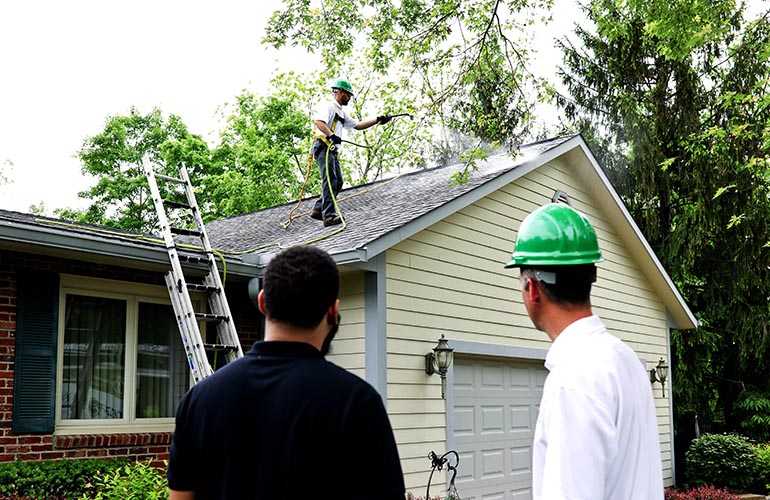Many solar companies face the challenge of homeowner reluctance to install solar panels over an older roof that may fail a few short years after installation, and the cost of a new roof gets in the way of a solar investment. With 80% of roofs in the United States made of asphalt shingles, solar providers are quickly discovering that the strength and health of a roof is key to closing the sale.
While the buzzword “plant-based” is popular in the dietary world, it’s not often heard in the solar, roofing or sustainable technology markets. But plant-based solutions could be the key to selling more solar systems to aging roofs.

One scientifically-formulated and 100% safe plant-based roof rejuvenating spray treatment can extend the life of asphalt roofing by as much as 15 or more additional years — perfect for older rooftops that want the benefits of solar today. Roof Maxx is a soy-based spray that restores flexibility to asphalt roof coverings, which increases waterproofing protection that can extend the life of the roof at a price that is a fraction of replacing it.
With the soy-based solution, homeowners can feel more comfortable investing in solar. Solar professionals can easily add this technology to their business services so homeowners can confidently invest in solar panels.
“Every solar installation that involves a roof involves questions of ‘How long is my roof going to last?’” said Nate Anderson, a certified Roof Maxx dealer in Grand Junction, Colorado. “We’ve partnered with the largest and oldest solar company in the area and have helped them to save many deals with older roofs.”
Anderson noted that it’s easy to demonstrate this solution to prospective customers by spraying the organic liquid solution onto a sample shingle. He also helps them run the analysis of what the rejuvenation will cost as opposed to replacing the roof or going forward with a solar installation that will require detachment and reset if the roof should fail within the five or so years to follow.
Understanding modern roof lifespans
Although the U.S. residential solar industry is on the rise, the growing concern over project cancelations and unexpected delays related to faulty roofing is valid. Since the early 2000s, many roofing manufacturers have begun to combine lower levels of asphalt with crushed limestone fillers in the shingles they produce. Less asphalt equates to less waterproofing protection, lower weight and much shorter service life than the traditional shingles of the 1990s that offered 30-year warranties.
Some manufacturers continue to uphold high quality, but the predominant shift has caused an epidemic of leaks, attic mold and appearances of roof mold — the result of airborne algae that produces black streaks and stains on many north and west-facing roofs.
If a homeowner purchases and installs new solar but needs a new roof within a couple of years, the cost and hassle isn’t small. A typical price for detaching and resetting a system is $1,500 to $2,500, in addition to suddenly being without solar services during the time of the roofing replacement.
Due to the quality of most asphalt shingles, roofs that formerly lasted 20 to 30 years are now failing in as little as seven to eight years. Class action suits against most major U.S. roofing manufacturers have become commonplace, with one suit including 6 million property owners. This has also caused the understandable reluctance of homeowners to invest in alternative energy with a roof that is failing more quickly than they expected.
Ecological and economic impact
Companies like Roof Maxx help secure solar deals by saving roofs and providing property owners with an eco-friendly and much less expensive alternative to roof replacement.
A recent Ohio State University study conducted by Juliana Vasco-Correa found that asphalt shingles account for 80% of U.S. roofs, and approximately 7% of U.S. roofs are replaced every year. If even 1% of single-family homes (about 15% of yearly replacements) applied a soy methyl ester emulsion formula (like Roof Maxx) instead of replacing the roof, the country could avoid 5.6 billion lbs. of landfill waste and 1.1 million metric tons of CO2 equivalents in emissions.This would save homeowners collectively $750 million over the lifespan of their houses.
The sustainability of solar energy is perhaps even doubled (or more) by the earth-friendly benefits of restoring an existing roof with a plant-based and bio-friendly alternative to additional asphalt. In all, the ability to inspect and protect an asphalt roof before a solar installation is a wonderful benefit.
Article Credit: solarpowerworldonline
